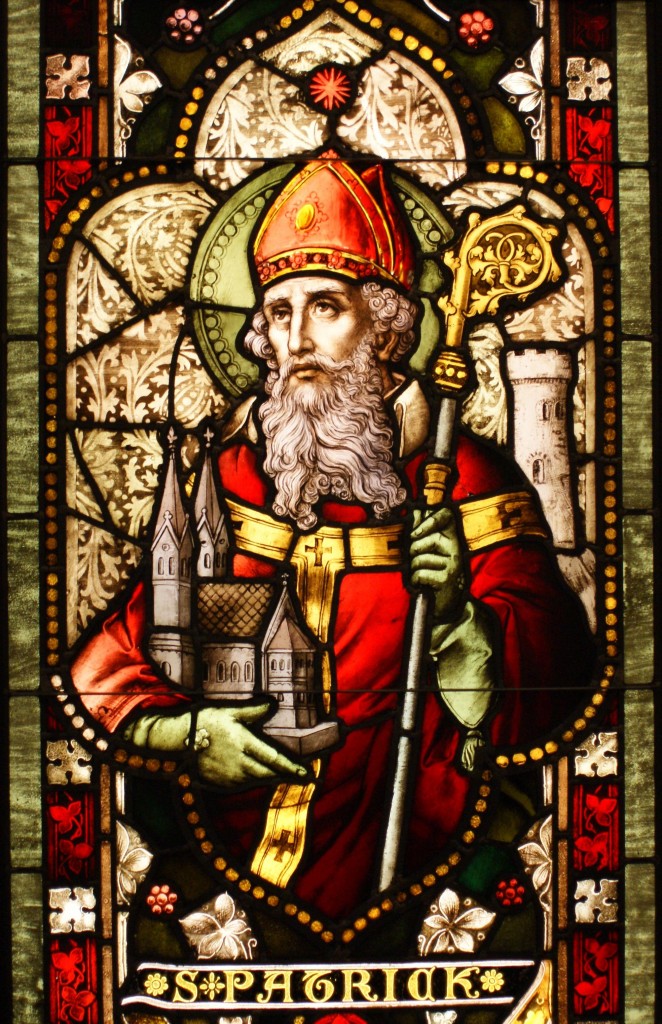
One night in fifth-century Wales, everyone in Calpurnius’ house was in bed asleep—everyone except Patrick, who sat on the edge of his bed. His head was swirling with the dream that had stirred him from a sound slumber. In the dream, a man he had known in Ireland handed Patrick a letter. Accepting it, Patrick read the title, “The Voice of the Irish,” and simultaneously heard voices crying out, “Holy boy, we beg you to come and walk among us once more.” Moved to tears, Patrick was unable to read further. Upon awakening, he realized he had received a mandate from the Lord: He was to return to Ireland, where he had once been enslaved, and bring Christianity to the people.
Little is known about this man now called Saint Patrick. He was born near the end of the fourth century in Wales and grew up in a wealthy, nominally Christian family. But when he was sixteen, raiders pillaged his town and took him captive to Ireland. There, Patrick became a slave to a Druid high priest named Milchu, who made Patrick a shepherd. During this period of isolation and brutality, Patrick came to know the Lord. He wrote of his experience:
“[T]here the Lord opened my mind to an awareness of my unbelief, in order that . . . I might . . . turn with all my heart to the Lord my God . . . And [the Lord] watched over me . . . and he protected me, and consoled me as a father would his son.”
After six years of enslavement, Patrick dreamed that God told him about a ship waiting to take him to freedom. He escaped that very night, traveling over 200 miles to reach the Irish coast, from where a ship, indeed, brought him back to his native Britain.
Patrick had changed. He was now twenty-two years old, fluent in Irish and toughened by trying experiences. At home, he felt restless and made plans to enter the ministry. He traveled to Auxerre, France, where he studied under Saint Germain for some fifteen years. Saint Germain believed in Patrick’s vision and helped him to his appointment as the second bishop to Ireland. It was a fortuitous appointment, for Patrick’s understanding of the Irish culture and language made him adept at winning converts, and he soon developed a following.
Still, the going was tough. Patrick was evangelizing people who warred for a living and whose native religion, Druidism, required human sacrifice. The Druid religious leaders were not at all tolerant of Christianity, and though Patrick converted many of them, others arrested and kidnapped him a number of times. The churches and schools he established were under constant threat of raids and enslavement, but they prospered nonetheless.
Through it all, Patrick remained steadfast: “[D]aily I expect to be murdered or betrayed or reduced to slavery if the occasion arises. But I fear nothing.” The persecution was real, but by God’s grace and after every reversal, Patrick escaped and returned to his evangelical mission.
Of the thousands taken captive by the Irish, the vast majority remained in captivity, living out their days in bitterness and travail. Others gained their freedom within Ireland but conformed to their captors’ culture. A handful managed to escape to their native lands but continued in a pagan lifestyle. And then there was Patrick, one of thousands, who, in the darkness of captivity, turned to God and set his heart on reaching Ireland for Christ. As Catholic journalist Anita McSorley writes,
“It doesn’t take a scholar to recognize how [Patrick] was able to do this. [He] was so certain that he had been specifically called by God to do exactly what he did . . . In this certainty, Patrick finds his strength . . . to overcome every obstacle . . .”
And that strength was sufficient. When he died, he had traversed the entire terrain of Ireland and preached the gospel with great effect, as he was happy to recall:
“So, [that is] how in Ireland, where they never had any knowledge of God but, always, until now, cherished idols and unclean things, they are lately become a people of the Lord, and are called children of God . . .”